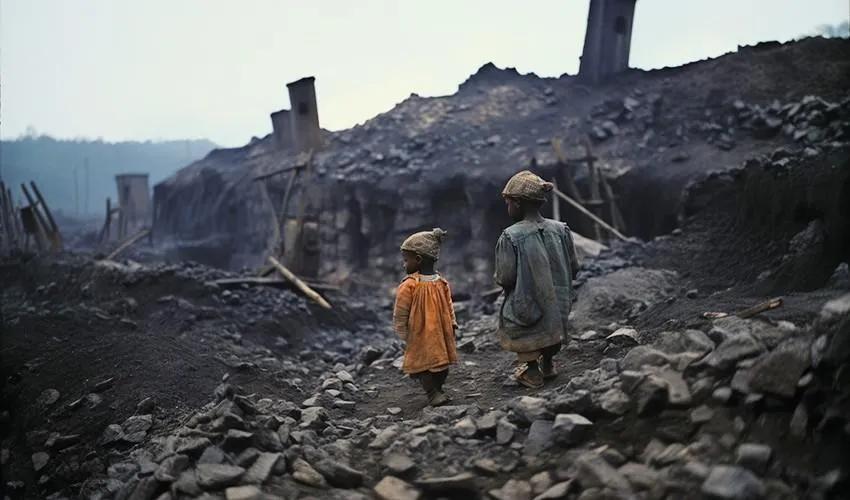
Beware of the Side Effects of the Green Transition
Policies and decisions designed to have a favorable impact on the environment can end up having measurable, non-positive consequences on other aspects of our lives, and on the lives of communities in remote areas if the process is not properly governed. These interdependencies are among the topics studied by Bocconi's GREEN research center.
Lithium-ion batteries are everywhere. Their efficiency, durability and density mean that nearly all portable electronic devices, not to mention electric cars, are powered by this technology. The name "lithium-ion", however, conceals a very important feature of these batteries: they contain high amounts of cobalt, up to 60% in fact. Cobalt is vital for the production of batteries, and since demand for batteries is still growing strongly there is also an increasing demand for cobalt.
Maurizio Malpede, a GREEN Fellow, has done some extensive research about the undesirable social aspects of intensive cobalt mining. In his article The Dark Side of Batteries: Cobalt Mining and Children's Education in the Democratic Republic of the Congo he describes some very negative consequences of cobalt extraction on the already suffering populations of Eastern Congo, where more than half of the world's output of the mineral originates.
Cobalt is generally not mined underground but is found on the surface associated with other minerals. In Congo, large numbers of children are employed for washing cobalt-rich rocks that are later refined elsewhere. Child labor itself is illegal, among other things because it prevents children from attending school. By combining available data from demographic and health surveys with the precise locations in which cobalt is mined, Maurizio Malpede has discovered that children who had worked in cobalt extraction did not achieve the same level of education as those living in other parts of Congo. Even more worryingly, children exposed to cobalt mining have been found to be 29% more likely to show difficulties in concentrating, 10% more likely to have difficulties in walking, and 20% more likely to have difficulties in understanding oral commands compared to their peers living in non-cobalt rich communities.

"I provided evidence that childhood exposure to cobalt mining in a context of low enforcement of child labor regulations leads to lower educational attainment later in life," says Maurizio Malpede. "I contributed to the literature by showing that the natural geographic presence of deposits of cobalt along with the labor tasks specifically requiring the use of children is associated with a higher probability of those children being employed outside their domestic environment and a lower probability of being in school."
The GREEN research center is actively investigating other areas of resource management as well. The center's director, Marco Percoco, has published a number of papers on the acceptability of Milan's road pricing scheme and its effects respectively on pollution levels, traffic composition, rents (with Filippo Maria D'Arcangelo). After Milan introduced its version of road pricing, it was important to assess its perception in the public's view. The key, Marco Percoco found, is that different costs incurred as a consequence of having to pay may impose different car usage and, as a result, different perceptions of road pricing. As for its effects on pollution, the results were positive but temporary, due to an inefficient policy design: motorbikes were not charged and the treated area is too small to generate positive outcomes for the whole city. Road users shifted from Euro 0–3 vehicles (highly polluting vehicles dating from before 2000–2001) to liquefied petroleum gas, bi-fuel and hybrid vehicles. However, the environmental benefits of the policy were partly offset by a substantial increase in the usage of motorbikes. Milan's road pricing has also had a small effect on housing rents which increased by 0.75% as a result of the reduction in external costs in terms of pollution and congestion.
Another less immediately obvious take on green policies was the political effect of Milan's Area B, that is the ban of older and more polluting cars from the city, studied by professors Italo Colantone, Livio Di Lonardo and Marco Percoco, along with Yotam Margalit from Tel Aviv. While all Milanese citizens benefitted from the policy in terms of cleaner air, the cost rested exclusively on the shoulders of those who were forced to change their cars or their mobility habits. The authors found that the self-estimated median loss for the citizens affected by the policy was a hefty €3,750. They were, then, able to compare the voting behavior of this group in the following elections and the behavior of owners of very similar, but slightly less polluting, cars, unaffected by the policy. The main political party opposing the ban, the Lega, was the clear winner in electoral terms. Car owners affected by the ban were 13.5 percentage points more likely to vote for the Lega. The authors also concluded that it was not a consequence of a change of mind toward less environment-friendly attitudes and behavior. It rather originated from hostility to a green policy approach that places disproportionate costs on a restricted group of people.